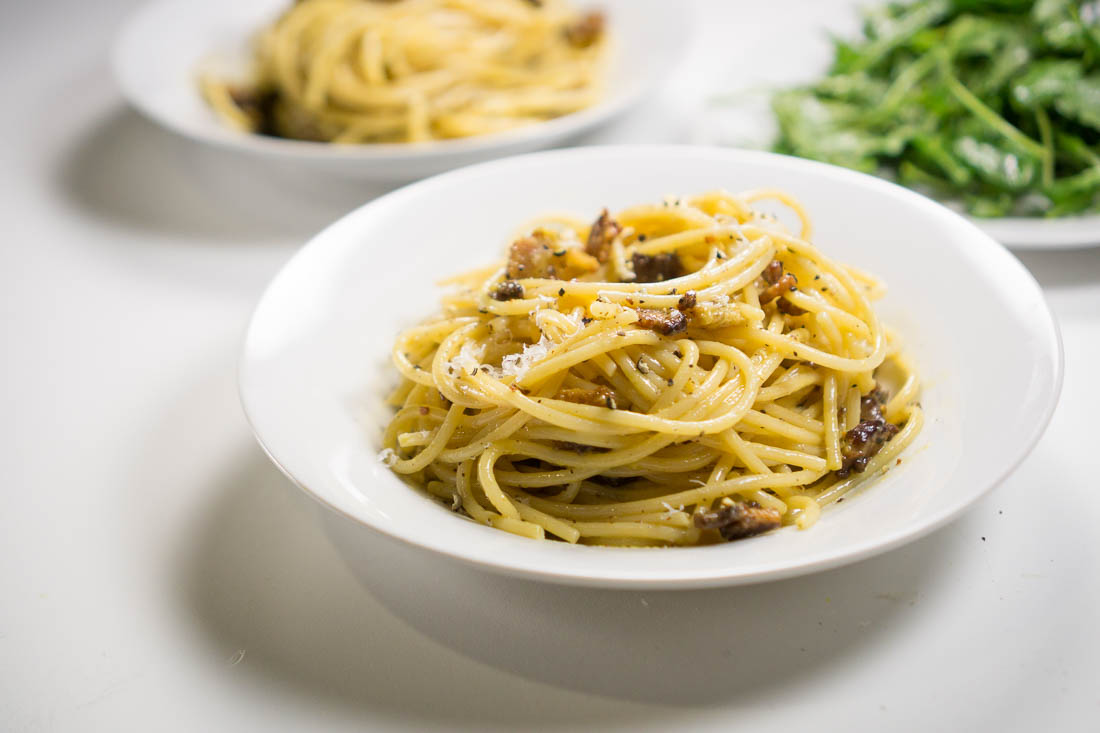
Spaghetti alla Carbonara
Adapted from Prune, by Gabrielle Hamilton
Ingredients
- 2.5 oz. pancetta or bacon cut into 0.5-inch cubes
- 4 oz. dried spaghetti
- 2 egg yolks
- 0.25 cups grated Parmigiano-Reggiano
- 1 tsp. freshly ground black pepper
- Salt
Instructions
- Evenly scatter cubed raw pancetta or bacon into a skillet (cast iron, if you have one) over medium-low heat. Render slowly, stirring occasionally until crisp and golden on all sides and sitting in significant amounts of its own rendered fat, and cubes reduced in size by half. Transfer pancetta/bacon to a small heat-proof bowl.
- In large bowl, place egg yolks and a hearty spoonful of rendered pancetta/bacon and some of its fat. Sprinkle black pepper over the egg and fatty pancetta/bacon until light dusting obscures the yolks.
- Cook spaghetti just until al dente in a big stockpot of boiling salted water, stirring during cooking to ensure that strands are separated. Immediately pull hot pasta with tongs, drain briefly over pot, turn out into the bowl of yolks and pancetta/bacon, letting some of the starchy pasta cooking water drip in along with the pasta.
- Stir rapidly and vigorously to cook yolks with the residual heat of the pasta and to coat each strand with egg and cured pork fat.
- Season with salt and generous sprinkle of grated Parmigiano-Reggiano and continue stirring to evenly distribute cheese and salt.
- Make neat spiral in center of pasta bowl as best as you can when plating.
Notes
My favorite notes from Gabrielle Hamilton (both beautifully-written and helpful in capturing the essence of the dish):
"Don't 'creamy up' the yolk and parm with extra hot pasta water or extra cheese or by adding the cheese early so it melts" - it should not "go out looking like creamy white pasta alfredo."
"Ideally, we want the strands slick with yellow, eggy egg yolk and smoky, salty, uriney pancetta fat, with all the granules of sweet, nutty grated parm clinging to the strands. You want to see the black pepper, taste the floralness of it, and feel the warm heat of it in the dish--but don't obliterate."